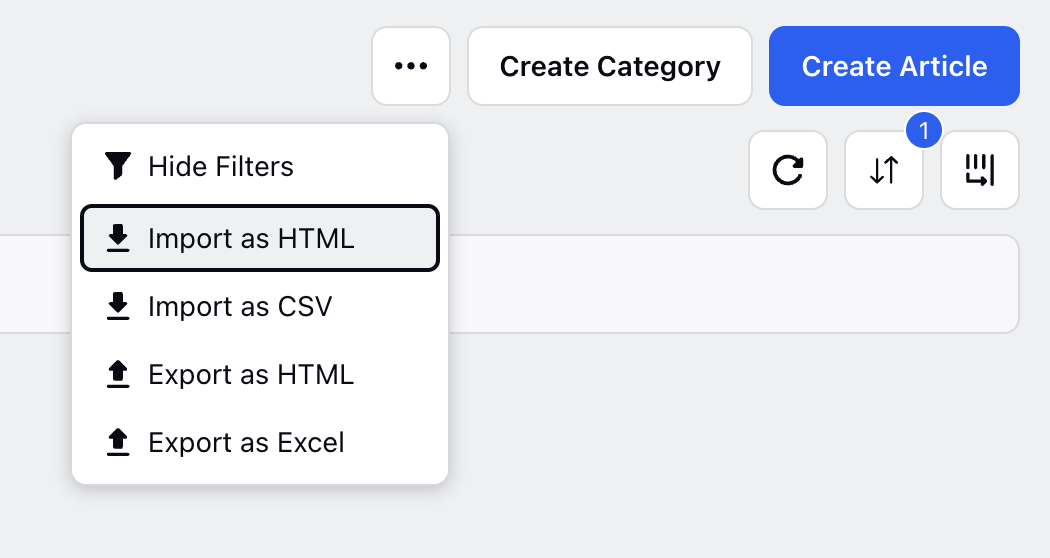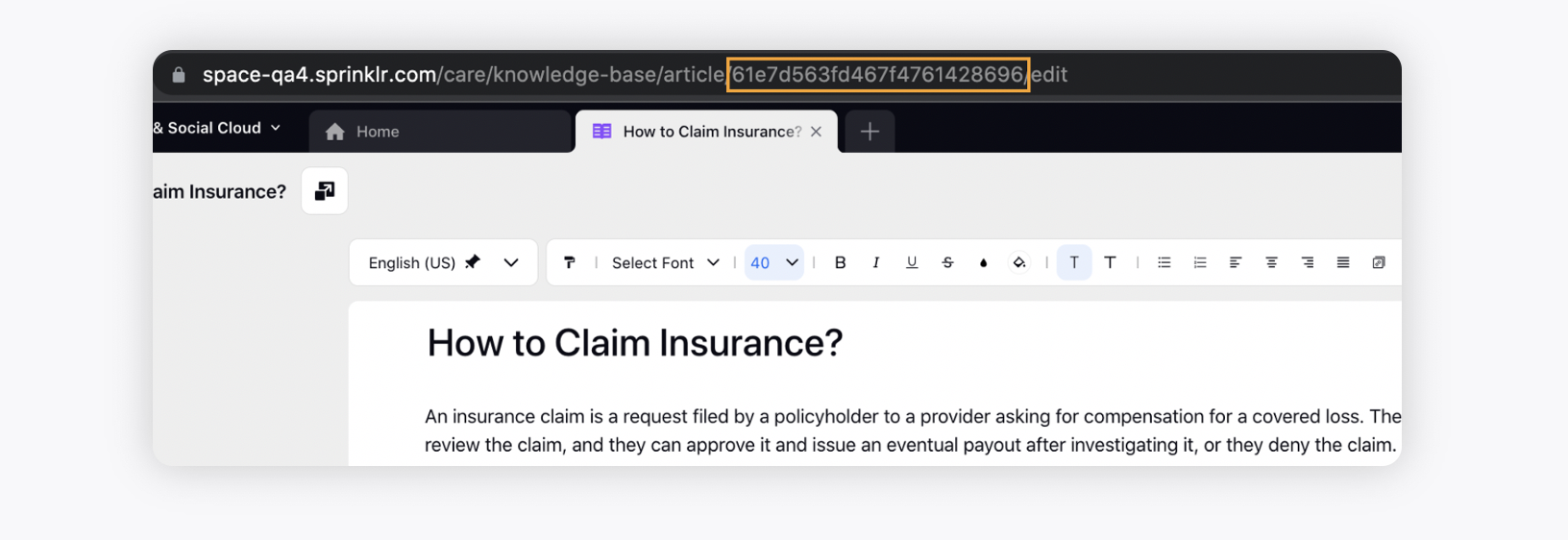Import External Content to Sprinklr Knowledge Base (HTML Import)
Updated
This is a step-by-step guide on how to bulk import your existing content into the Sprinklr Knowledge Base. To learn more about the automatic import process, click here.
To Import Articles
If you want to import a set of articles into the Sprinklr knowledge base, create a CSV file.
1. Click the New Tab icon. Under the Sprinklr Service tab, select Knowledge Base within Resolve.
2. In the Knowledge Base builder, click the Options icon at the top and choose your preferred method of import. Select Import as HTML.
3. Make sure that you have already created the categories in the Sprinklr Knowledge Base for the articles to be imported before starting the import process.
Note: Please ensure you have the required permissions. To learn more, see Sprinklr Service Permissions.

Importing as HTML involves using an .HTML file format to import data. This method is commonly used for importing web content, as HTML is the standard markup language used to create web pages. HTML files contain both the content and the formatting of the data being imported, and can be customized to fit the specific needs of the importer.
If importing as HTML, upload the CSV file and the HTML .zip file that contains the content to include in your article.
4. Once the import is completed, you will get a platform notification with a response file to download. The response file will contain the details on the errors (if any) detected during the import.


Note: You can get email notifications for import/export events. To get this capability enabled, please work with your Success Manager.
To Create a CSV Metadata File
Create a CSV file and add the details as explained below. There is a CSV file required for "import as HTML" option comprising of the fields explained below. The format is shown at the end of the article.
Export Import Id
For "Import as HTML", this field should be the same as the exact name of your .HTML file of an article. It should not contain any special character.
Folder Id
The Id of the knowledge base category to which you want to add the imported article. You can get the folder ID from the category page URL as shown below.
If this column is missing or contains null values, an error will be flagged in the response file, indicating a failure to import.

Folder Name
Only applicable for "Import as HTML" option.
This is the name of the folder/category to which the above folder Id corresponds to.
Locale
Base Article Id
The optional field applicable only when the base article is already imported/created and now you want to import the translations of that article. You can get the article ID from the base article URL as shown below.
For every article, we designate the base language, meaning the original language of the article. Should you wish to have the translations of that article imported, you can add them under the base article using the corresponding base article Id.
Note: To learn more about how to create a new article in the base language, click here.

Title
The title of the article that you wish to add in Sprinklr.
Status
The Status column allows you to specify the current status of the content, such as Approved, Draft, etc. If this column is missing or contains null values, an error will be flagged in the response file, indicating a failure to import.
Optional Columns
Tags
Specify the article tags in the Tags column.
Migration From
The Migration From column indicates the platform or source from which the content is being migrated.
Migration ID
The Migration ID column contains the ID of the content on the platform from which it is being imported, facilitating easy tracking and reference.
Sample Metadata File for Import via HTML Format
This is the metadata CSV format that goes with the HTML zip file.
.png)
For adding Translations, add the base article id of the the article to which the translations needs to be added.